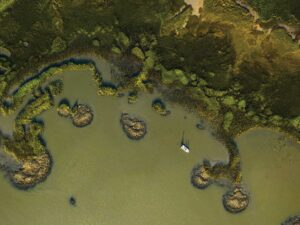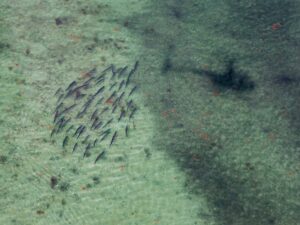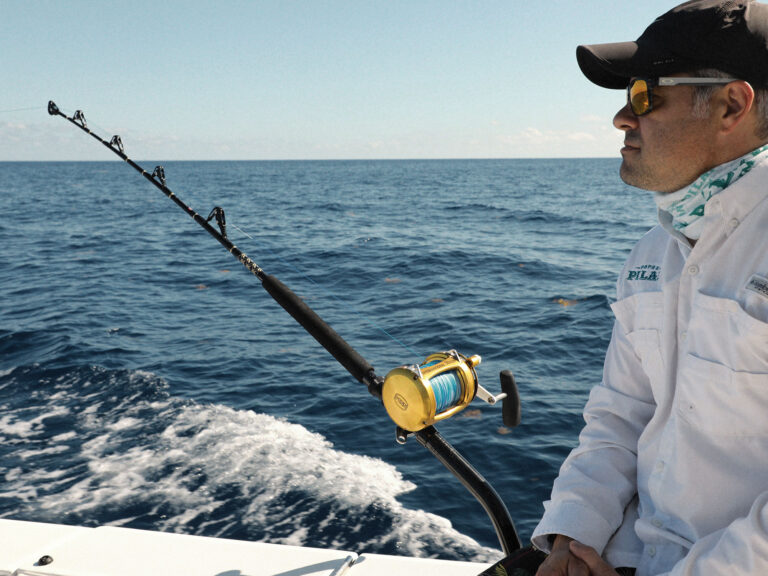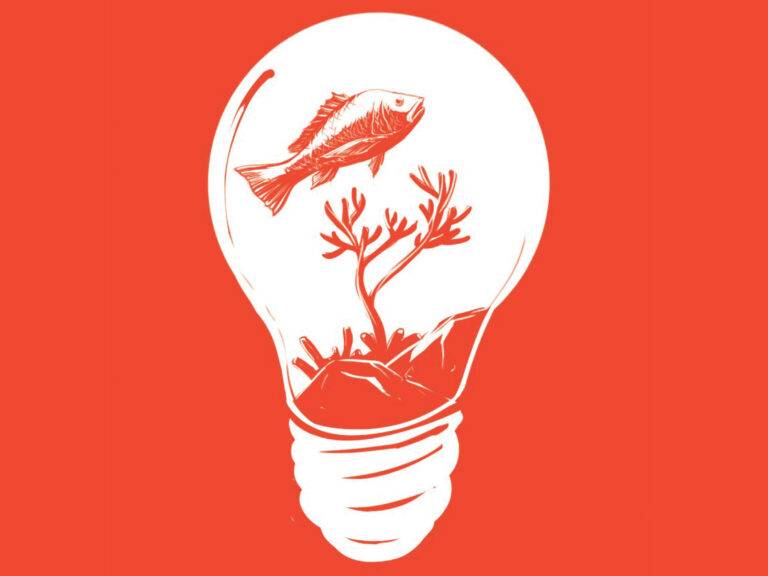
There is no more reliable way to produce a good catch out of Key West than to target wrecks. Even those close to Key West produce many banner days, especially for migratory species like cobia, kingfish and blackfin tuna. If you’re looking for big snapper and grouper, head west to wrecks around the Marquesas and beyond. The fish will be there, but how you present your baits will determine your level of success.
As for locations, the list of wrecks is long. Some counts total more than 200 wrecks around Key West.
In the Atlantic, nearby wrecks include the Rubble Pile, the Curb, the Sub, the Airplane and the Vandenberg. In the Gulf, Sturtevant, the Caterpillar, the Luckenbach and the Patricia Target are among the numerous options.
“It’s amazing how much life will come through any one of these wrecks in a year’s time,” says Key West Capt. Pepe Gonzalez. “I’m constantly surprised by the species that I find at wrecks I know very well.”
Live-Baiting with Pilchards
Gonzalez’s favorite technique is live-chumming with pilchards, either on the drift or at anchor. He says the pilchards you toss off your stern gather in a school and attract tuna, cobia, sailfish and other pelagics. Even grouper and mutton snapper rise up from wreck environs to take baits. Hook one of the liveys, toss it with a handful of free-swimmers, and hold tight.
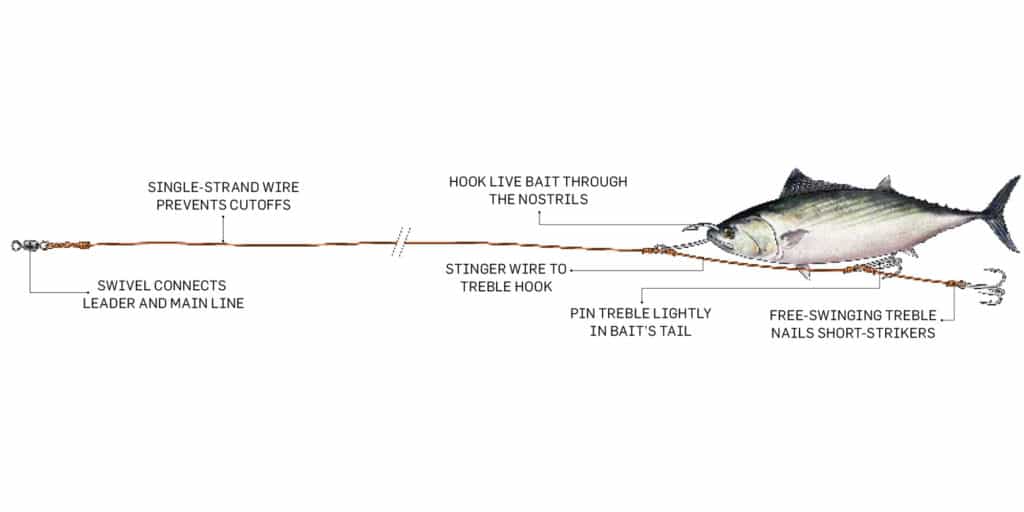
The toughest part of the technique, especially for visiting anglers, is finding and cast-netting the pilchards. At the very least, you need a few hundred to make the magic happen. If possible, captains will fill their livewells with a couple thousand.
“We’re secretive about fishing spots,” Gonzalez says, “but even more secretive about where we find the pilchards.”
Common places where pilchards gather include the shallows around Smathers Beach, Boca Grande Key, and various keys in the backcountry.
Carolina Rigs for Bottomfish
Whether you drift or anchor at wrecks, the classic Carolina rig with a 4- to 6-ounce sinker remains a popular choice for targeting bottom species, which in the lower Keys include black, red and gag groupers, and mutton, yellowtail and mangrove snappers.

“We’ll usually fish wrecks in 160 to 250 feet of water,” says Capt. Brice Barr of Double Down Sportfishing. “If it’s the winter spawning season closure for grouper (January 1 to April 30), I’ll drop baits 200 to 300 feet away from the main structure to target mutton snapper, jolt-head porgies, margates and vermilion snapper that hang out there.”
Read Next: Guide to Fishing Key West
If you are drifting, keep your baits down as far as 100 yards past the main wreck structure. Plenty of fish lurk that far from it.
The best live baits for the bottom bite include pilchards, if you can find them, and pinfish, ballyhoo, threadfins and goggle-eyes. For dead baits, try a fresh ballyhoo plug, whole squid, sardine or strip of bonito.
Sand-Balling
Before you anchor at a wreck for bottomfishing, make sure you have some current. Also, look for clear, blue water, a big plus for bottomfishing. If the water color over your wreck isn’t looking good, you may want to move deeper to look for better water.

At anchor, you’ll want to chum to get predators to come your way. Sand balls work well to draw deep bites. Mix sand, some oats, and a couple of chum blocks thawed the day before in a bucket. Pack enough of the mixture around a hooked bait to form a ball (about baseball-size), and let it down gently into the water. A small chunk or strip of bonito with the skin on is a good bait to use on the concealed hook. It stays on well and disperses plenty of scent. As the sand ball descends, it disintegrates, scattering the chum that draws in fish. When it gets near the bottom, you won’t have to wait long for a bite.
Live-Lining Baits
Whether you’re at anchor or drifting, deploy a big live bait down-current on a flat line for pelagics like sailfish, kingfish, dolphin and wahoo, but watch that the bait doesn’t foul other lines.

Gonzalez likes to drift a small bonito, blue runner or speedo on a treble-hook stinger rig to attract wahoo. You can also slow-troll that live bait across the wreck zone. Any way you present the livey, set a very light drag on the reel. After the hookup, let the fish run and keep the line tight to play it.
Get the Drop
Bright speed jigs (also known as flutter jigs) are a quick and fun way to prospect a wreck. They are deadly on amberjack, blackfin tuna and mackerel, and they take plenty of snapper and grouper. They’re standard in the repertoire of wreck anglers around Key West.
But old-fashioned lead jigs still deserve their time. Some of the most successful Key West captains, like Rob Delph of Second Generation Charters, use these jigs consistently.

“I’ll use light jig heads, from 1/4 ounce to 4 ounces, with a piece of bait on them,” Delph says. “Drift back to the wreck in the current, and look for the strike. The depth of the water and current speed will determine the jig-head weight. The lighter the weight, the more natural your presentation will look. My favorite is a ½-ounce jig head fished on a Daiwa Saltiga 15 conventional reel. The Daiwa BG 5000 spinner is another great reel that won’t break the bank but will catch you some big fish.
“When you fish wrecks, be sure to have a jig rigged with a rubber tail ready in case a big cobia pops up. I like using Ron-Z lures for cobia, amberjack, tuna and kingfish,” Delph says.
Read Next: Fishing the Key West Wrecks
On a self-guided trip, don’t rely on any one of these techniques alone. Be prepared to use as many as you can manage. If sea and wind conditions oblige, you’ll likely want to use a few of the techniques simultaneously, as long as you watch lines closely to avoid tangling. It’s better to fish fewer baits more effectively than to lose time and tackle to tangled lines.

Two notes on etiquette and regulations: Always watch out for divers in the water as you approach a wreck, and observe other fishing boats already in position. If they are anchored, politely ask to anchor at a respectful distance before you move in. Or if they’re drifting, make sure you don’t interrupt their pattern. Common courtesy goes a long way. Regarding regulations, the Florida Keys National Marine Sanctuary has been conducting a once-a-generation review of boating, diving and fishing practices in the waters under its jurisdiction, and some new rules may be enacted. Check the latest regulations and closed zones before charting your trip and dropping your lines.
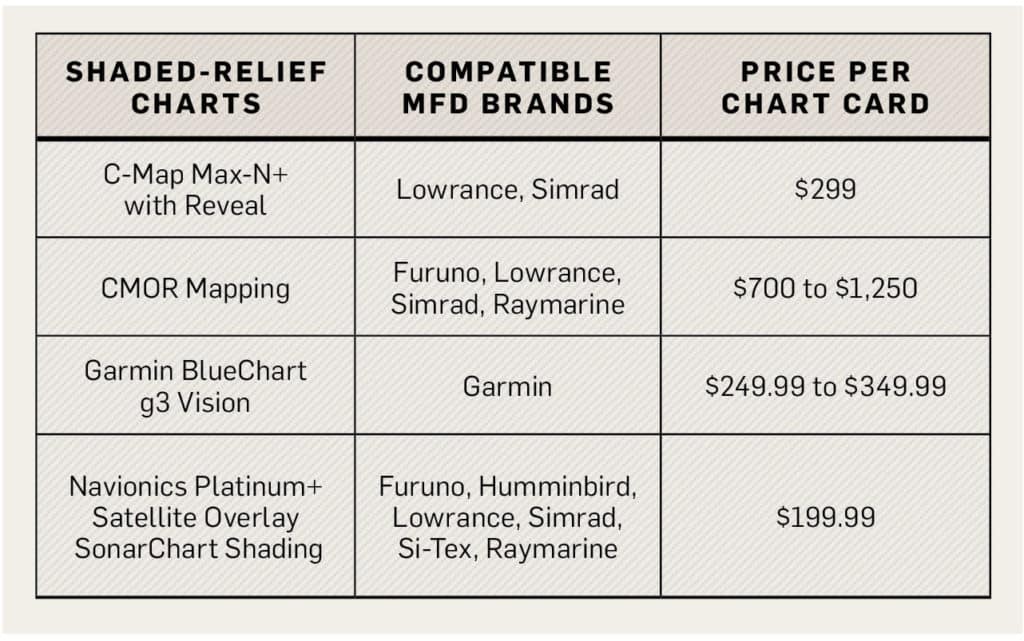
Tackle Box:
Rods: 7-foot, 20-pound spinning for yellowtails; 7-foot medium-heavy conventional or spinning for mutton snapper; 6 1/2-foot conventional boat rod for grouper; Penn Carnage II or equivalent for amberjack
Reels: 3000- or 4000-class spinners for yellowtails; Daiwa Saltiga 15 conventional, BG 5000 spinning or equivalent for mutton snapper; Shimano TLD 25 or equivalent for grouper; Penn Fathom two-speed or equivalent for amberjack
Line: 20-pound braid and 12- to 20-pound fluoro leader for yellowtails; 50-pound braid and 20- to 50-pound fluoro leader for mutton snapper; 60-pound braid and 30- to 50-pound fluoro leader for grouper; 60-pound braid and 60- to 80-pound fluoro leader for amberjack
Bait/Lures: Shrimp, strips of bonito or live pilchards for yellowtails; bucktail jigs or live pilchards or ballyhoo for mutton snapper; live pinfish for grouper; leadhead or flutter jigs for amberjack


